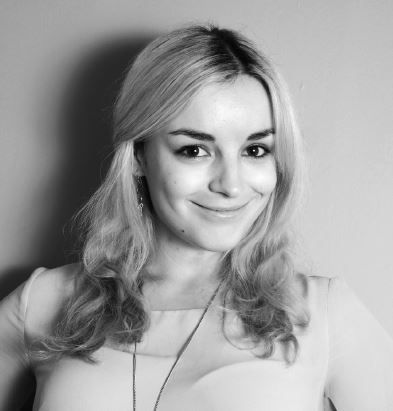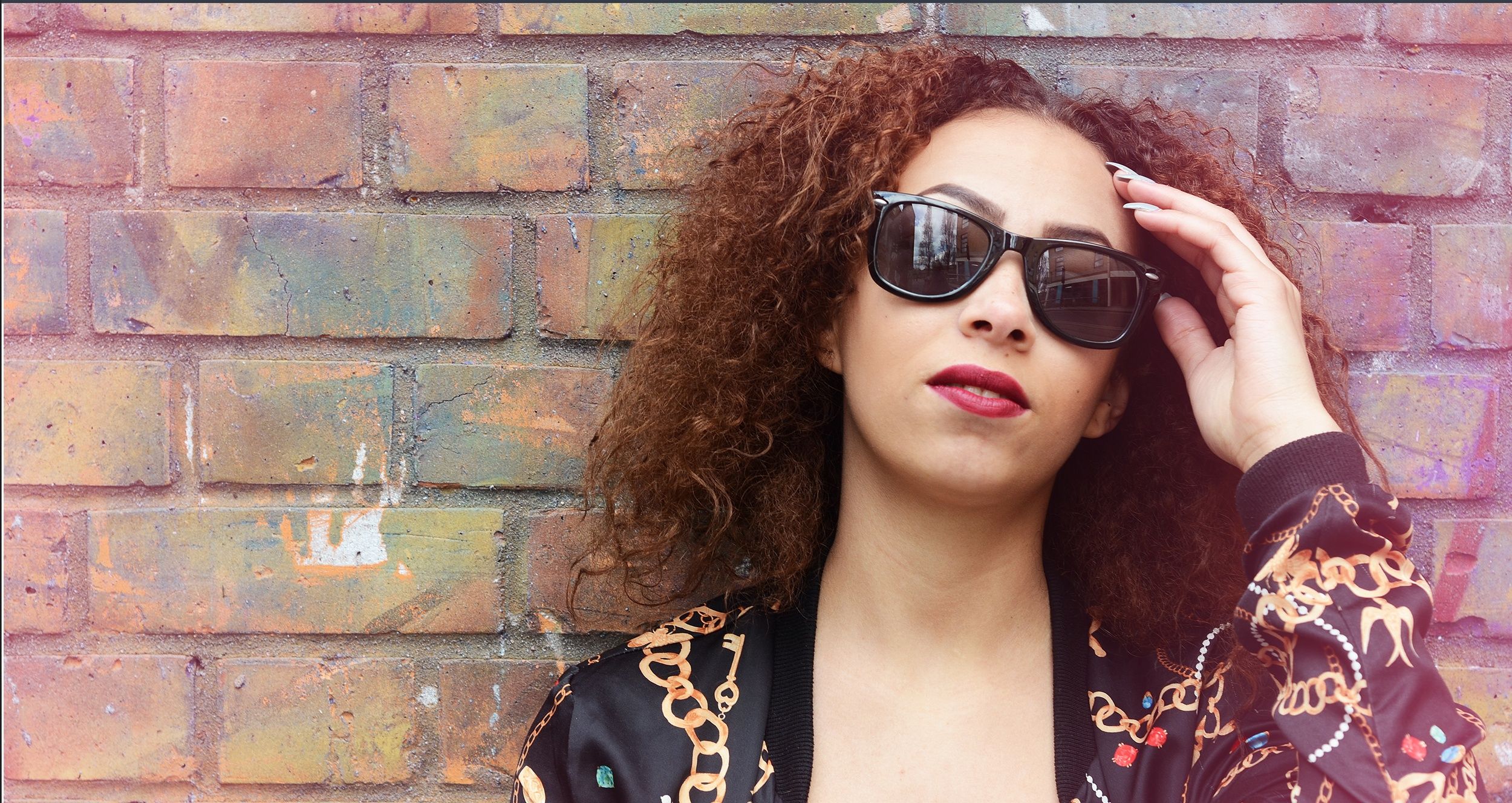As a new photographer, or even an experienced photographer looking for something new, you may wish to shoot with inexperienced models.
Amateurs can be useful for a number of reasons. For example, they have not learned how to pose or what fashion photoshoots usually require, which means that they have fewer bad habits and are more likely to look natural.
How well the shoot goes can often be down to you, the photographer, more than to the model. As an amateur, they will be looking to you for direction, reassurance, and feedback. It’s your job to ensure that they feel comfortable, know that they are getting it right, and deliver you the best possible results.
From choosing your model and location to getting great shots, there is a lot to consider. Before working with an amateur model in the city, try out the tips we will guide you through here.
Here is what we will cover:
- How to find the right model
- How to use the environment for stunning composition
- How to get the best results from an amateur model
Recommended Reading: If you’d like to learn how to create amazing portraits, grab a copy of Photzy’s premium guide: The Art of Portrait Photography.
How to Find the Right Model
What makes a good model?
There are a lot of factors which might go toward answering this question. You could include:
- experience,
- knowledge of how to use their face and body,
- awareness of lighting,
- the ability to listen to direction, and
- a unique or attractive look.
For an amateur model, it is only the last two points that really count. Someone with a strong, striking look might be able to simply stand and look into the camera and still pull off a great shot.
Even if their look is not very striking, someone who can take direction is a good fit for an amateur photoshoot. They will be able to pose in the way that you tell them to, changing their facial expressions and listening to your feedback.

A model with a unique look and style can be an excellent place to start.
If a model has none of the listed qualities, then they probably won’t be a good model.
How do you identify someone who will be a good model? One idea is to take a look at their social media profile. If you have found them on a modelling site looking for their first ever photoshoot, there may also be some selfies uploaded there to check out.
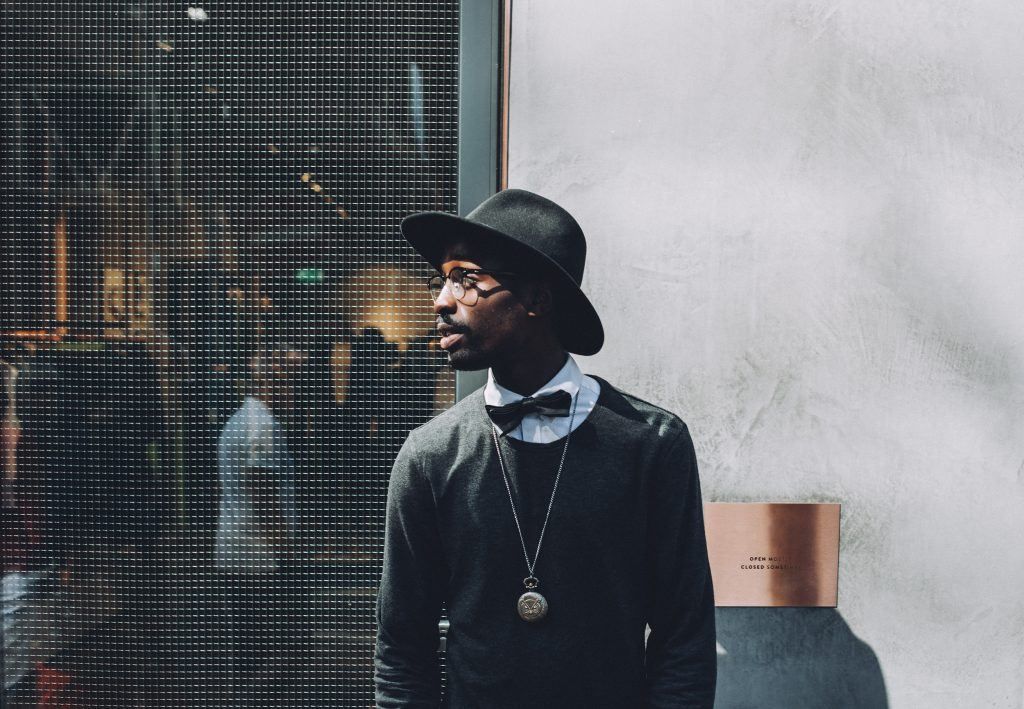
These days, so many people are used to posing for social media.
Because of the rise of selfies and the prominence of social media, lots of people are learning how to pose and what looks good by posting on Instagram or other sites. You could get a good idea of how they will perform by browsing these shots.
Small fashion bloggers are a good source of amateur models, especially if you already love their sense of style, as they can arrive at the shoot ready and prepared. Look for those with follower counts around the 1,000 to 10,000 mark, as they are less likely to be more experienced.
Small fashion bloggers are a good source of amateur models, especially if you already love their sense of style, as they can arrive at the shoot ready and prepared.
Of course, you may scout someone the old-fashioned way, by seeing them on the street. In this case, you will have to follow your gut. Over time, you will learn that a stunning look in person does not always equate to a photogenic nature. This is something you can only learn through practice.
Key Lesson: You can choose your model carefully by looking at social media and other online profiles. A unique or striking look is important, but being able to take direction is equally necessary for great shots.
How to Use the Environment for a Stunning Composition
Now that you have your model taken care of, the next important thing is your setting.
Cities are full of so many different, exciting environments. Skyscrapers and office buildings, historic buildings in older parts, shopping streets with high-end boutiques, trendy market areas, graffitied walls, parks, public buildings, and so on. What is important is how you use these different environments to good effect.
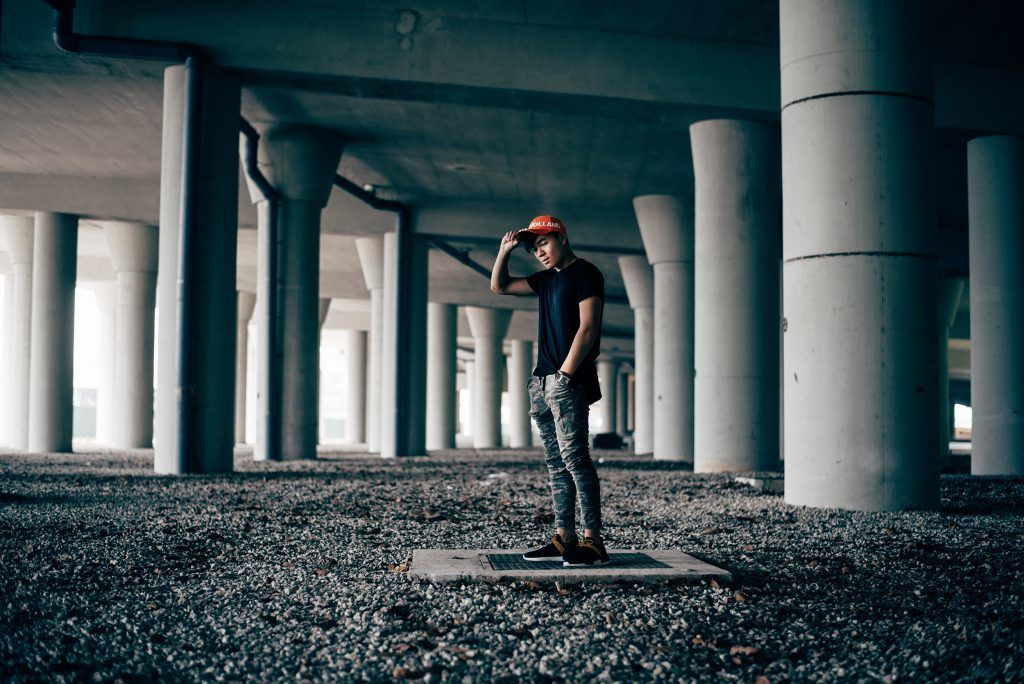
Parking lots, under bridges, in back alleys – sometimes the most interesting compositions are off the beaten path.
Take our example in the image above. The photographer has identified an area with these functional, monochromatic concrete pillars. It makes for a striking landscape composition. By introducing the model in the center of it all, that composition has been elevated to another level. The figure mirrors the concrete pillars and also stands out by nature of incorporating that bright spot of color.
Scouting locations before you shoot is very important for finding the right views and angles and understanding how busy or popular a spot might be.
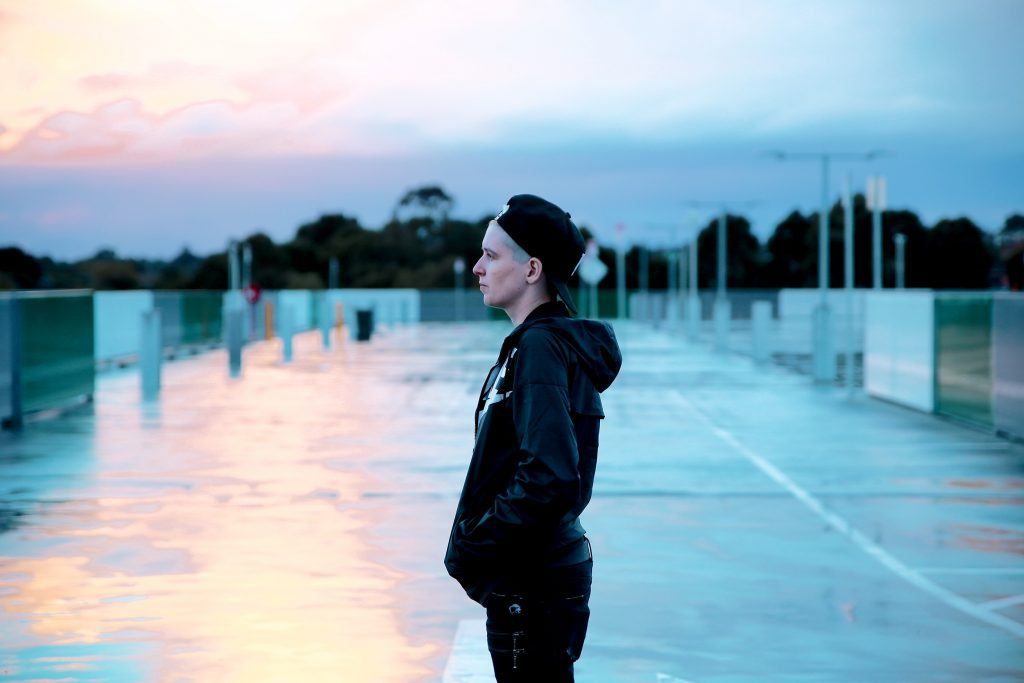
The sunset reflecting from wet surfaces is stunning.
The time of day at which you visit a location can change its character greatly. Take the example of the image above: at any other time, we might be looking at a simple tarmac road, possibly part of a parking lot, with few interesting features.
However, the photographer has waited for a more meaningful time of day. With the colors of the sunstreaked sky reflecting in wet areas of the tarmac, the shot becomes ethereal and exciting.
Some locations will be packed at lunchtime or during rush hour, and almost abandoned in the evenings. The difference could make or break your shot.
The more you plan ahead, the more time you will have to spend directing your model on set. Don’t leave them flustered and unsure as you spend time trying to find the right next location. Have your shots in mind so that you can move between them easily
Key Lesson: Always scout potential locations in the city beforehand and explore what they look like at different times of the day. Plan your compositions so that you can focus on the model during the photoshoot.
How to Get the Best Results From an Amateur Model
Amateur models are likely to be nervous, unsure of themselves, and possibly prone to producing uninspired or over-the-top poses and expressions.
Because of this, your task is to direct them and make sure that they always know what they are doing.
Amateur models are likely to be nervous, unsure of themselves, and possibly prone to producing uninspired or over-the-top poses and expressions.
Your first step is to make them feel relaxed and comfortable. Talking, smiling, and laughing together can achieve this. Take the conversation in directions that interest them. Ask about their personal lives, their work, and their likes and dislikes. Show them that you are a trustworthy and friendly person.
If you sense nervousness, be sure to keep your voice calm and soothing as you give instructions. Never snap at them or lose your patience. Let them know when they are doing well with a few words of encouragement.
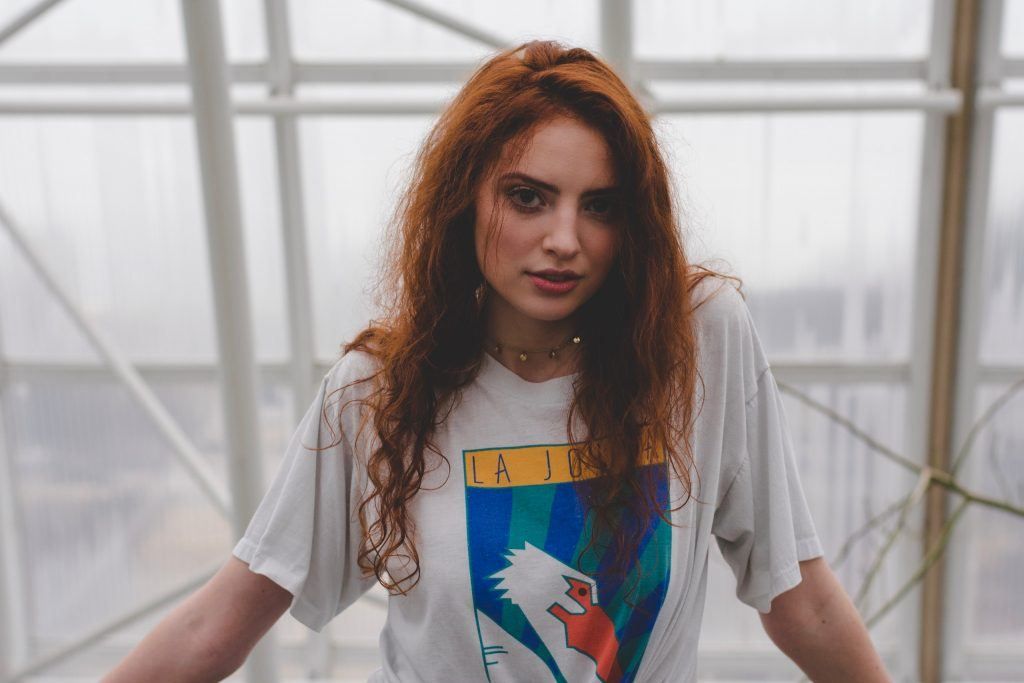
Unguarded moments of truth often make for the best portraits.
This will produce the best results, as a happy and relaxed model will give you more, and those unguarded moments – smiling at a memory or laughing at a joke – can produce amazing shots.
Don’t be too forced with your poses and expressions that you expect from the model. When an amateur is involved, creating a natural-looking shot is so easy. Ask them to look around, to explore their environment and interact with it.
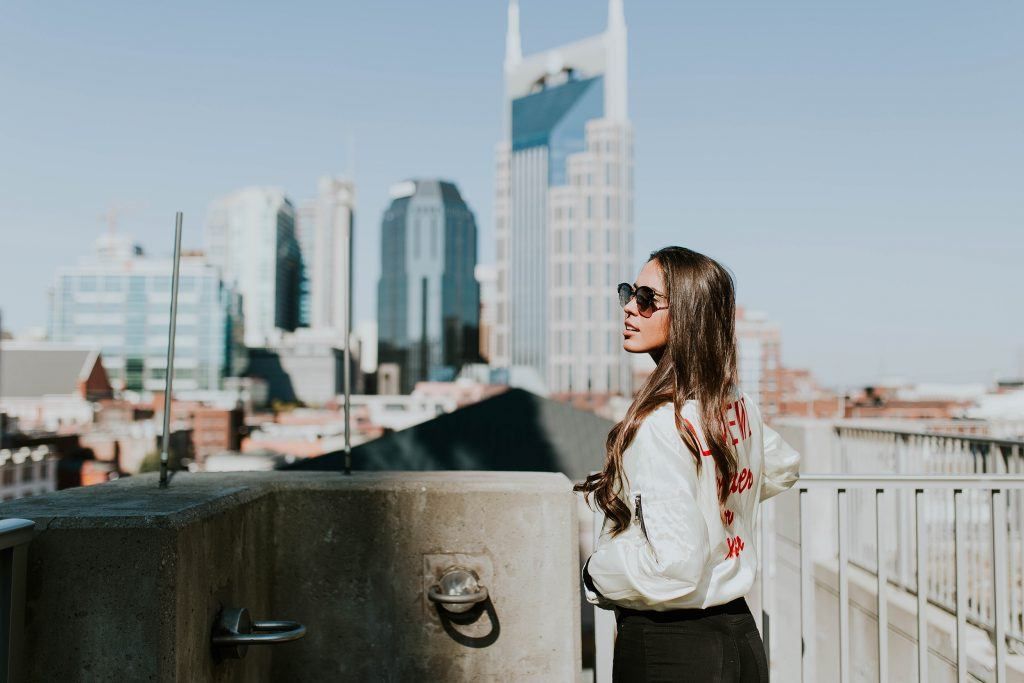
Amateur models can create fantastic natural shots.
Photographs that seem to show a genuine moment in time can be more interesting than stylized poses. Keep this in mind and encourage your model to do what feels comfortable.
Try these key phrases to keep the shoot flowing:
- You’re doing great!
- That was fantastic!
- Hold that there for a moment, it’s perfect.
You may also need to distract your model from the curious views of passers-by, which can be embarrassing for amateurs. In this case, holding a more natural look which could just as easily be for a holiday snap will be useful in more ways than one.
Key Lesson: A genuine moment can only be achieved with a relaxed and comfortable model. Focus on keeping them happy and let them know when they are doing well.
Recommended Reading: If you’d like to learn how to create amazing portraits, grab a copy of Photzy’s premium guide: The Art of Portrait Photography.
Conclusion
You can achieve great shots by:
- finding a model with a unique look,
- ensuring that they can take direction,
- using the location for stunning composition,
- scouting your ideas beforehand, and
- keeping the model relaxed and comfortable.
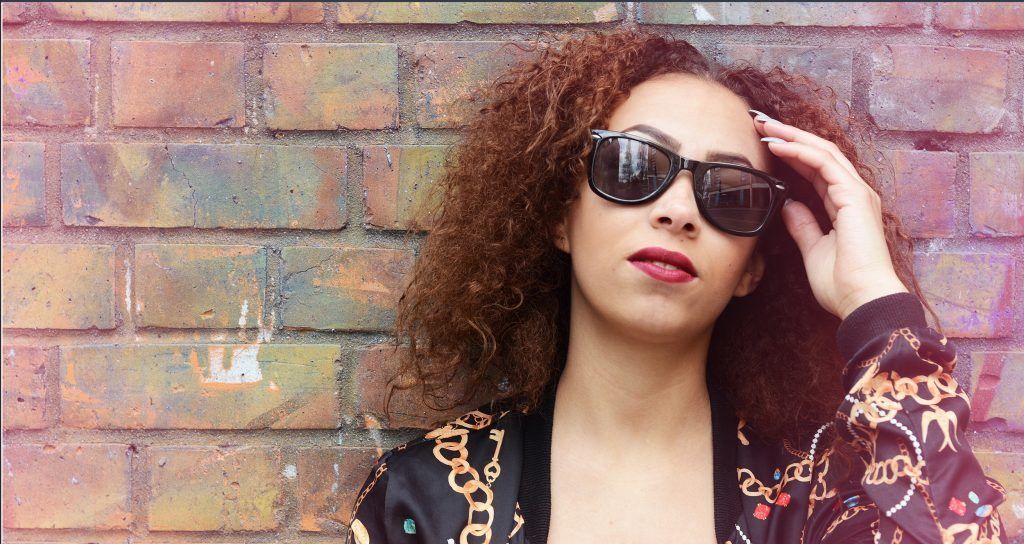
Photograph by Rhiannon D’Averc
Self-Check Quiz:
- What social media channels can you check to see if someone will be a good model?
- How do you define a good model?
- What steps should you take before the photoshoot begins?
- How can you keep the model feeling relaxed
- Should you focus on set poses or natural moments?
- What attitude should you present if a model is nervous and not working well on camera?
Learning Assignment:
Find a model in your local area, choose an interesting location, and do a photoshoot. Even if you do not live in the city, you can still find some buildings, a small town, or a residential area which can fill in as the location for now.
First of all, assess how good you think the model will be from their social media channels. When you meet up in person, consider whether you were correct in your assessment or not. You will start to learn to recognize some signs which might indicate great or poor potential.
Bonus: Think of some reassuring phrases and use them during the photoshoot to see whether they improve the model’s performance.

